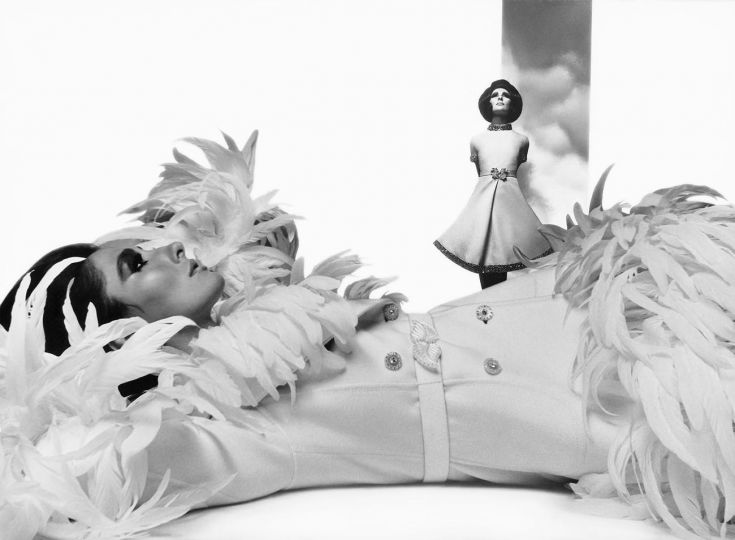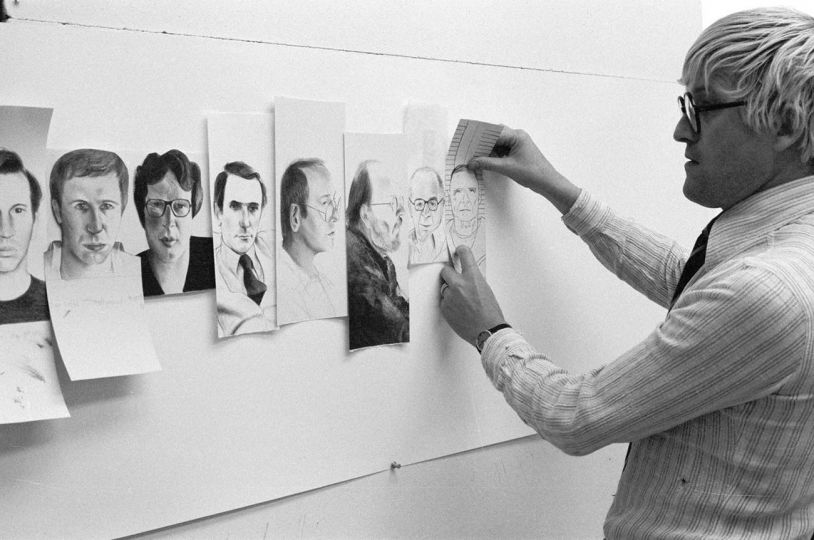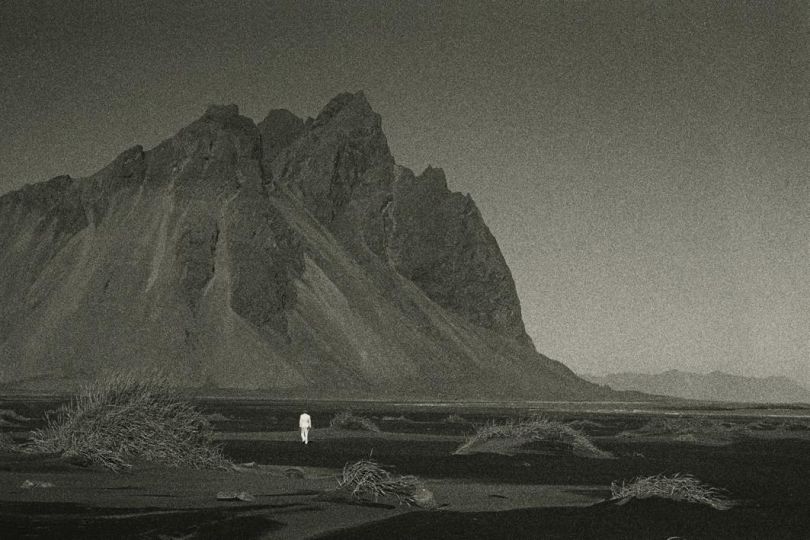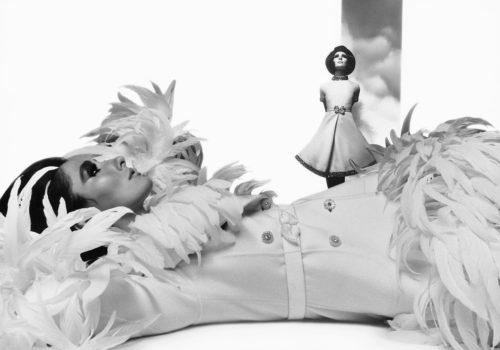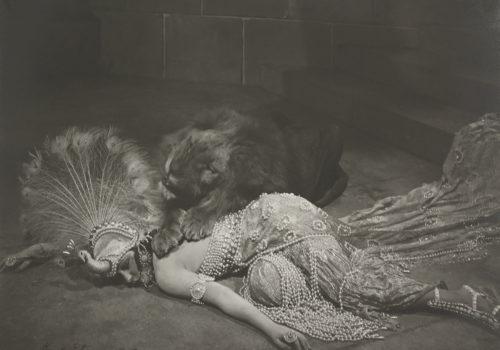Hopstreet, Brussel, Deurle, Belgium: Julie Cockburn, Noé Sendas, Sara Imloul.
Julie Cockburn (°1966, UK, lives & works in Suffolk, UK) ( images 1-3)
Julie Cockburn works with found images and objects, transforming them into new works of art. Using her own personal visual language, Cockburn embelishes carefully sourced second-hand photographs with embroidery, collage, screen printing and painting to produce her ongoing series of portraits and landscapes. Having trained as a sculptor, each composition plays a key role in the original photographs that Cockburn chooses. In addition, colour, texture and inherent meaning are fundamental to the decisions she makes when executing her transformations. Cockburn’s whole practice has a meditative quality apparent in the attention to detail and meticulous needlework in her embroidered works.
Noé Sendas (BE 1972, lives and works in Berlin, Madrid and Lisboa) (Images 4-6)
Noé Sendas began presenting his work in the late Nineties. Explicit and implicit references to artists and literary, cinematic or musical creations are part of his raw materials. Specific concerns about the reflection and practise of visual arts can also be added to his repertoire. These include: the body, as an entity that is simultaneously theoretical and material; the observer’s perception mechanisms; or the discursive potential of exhibition methods. His notable Crystal Girls deconstructs film stills from Hollywood golden age, eliminating faces, limbs and settings, creating enigmatic sophisticated still lives.
Sara Imloul (Fr 1986, lives and works in Paris) (images 7-9)
Sara Imloul has developed a practice focused on symbolic and autobiographical photography by staging her contrasted black and white images born out of inner visions and memories.
In line with a surrealist gaze turned towards the regions of the imagination, the photographer, widens the doors of perception and appeals to inward-turned vision, all favorable to visual experiences where reality and symbolic significance are as if intermined. Haunted by the memory of the self, inhabited by the intimate her images thus tend to perfect a knowledge of the exclusive arid refer to the memory of duration, to that of things, beings and instants, to everything that alters time, like a proposal she intends to oppose to death.
Since her studies at the ETPA in Toulouse, France, Imloul has been using calotype, a process developed by Henri Fox Talbot in 1840, which makes it possible to obtain a contact print from a paper negative. Each negative is reworked by hand, Imloul invents personal techniques in her studio that enable her to create her mysterious world of images by mixing drawings with collage atop her photographic prints. Either she work by blackening the salt to add light or by subtracting it with potassium ferricyanide to obtain a more shaded effect. In the age of digital images and social networks, this artist has chosen slowness, the Arte Povera of photography.
Hopstreet
Sint-Jorisstraat 109 Rue Saint-Georges,
B-1050 Brussels
Museumlaan 16,
B-9831 Deurle
hop(ad)hopstreet.be
+32 496 54 44 54
Keteleer Gallery, Antwerpen: Paul Kooiker & Sybren Vanoverberghe
Paul Kooiker (Dutch 1964) (images 10-11)
As a visual artist using photography as his medium, Paul Kooiker’s work is known for its typical signature and character. His work is layered and varied; his photos are visually appealing, open, timeless, without being bland. As a result, he has become a much sought-after creator of iconic images. Kooiker creates an enigmatic kind of beauty that is never superficial, but rather Freudian in the way it plays with dark desires, fetishes and subconscious dreams. He never shies away from any subject or approach. Disconnected from time and place, and transcending classic gender roles, his surreal images feel like film stills of stories we can only imagine. The practice of Paul Kooiker is characterized by a conceptual and experimental approach to photography. For the past five years he has created works that flirt with the boundary between commerce and art – the division between his fashion photography and autonomous works is almost impossible to distinguish.
Sybren Vanoverberghe (BE 1996, lives in Ghent and works in Otegem) (images 12)
Sybren Vanoverberghe engages with photography, employing diverse printing techniques, installations, structures, and discovered objects in his artistic practice. His creations capture landscapes and their remnants in a perpetual state of transformation, revealing the intricate interplay between place and time. Through his works, Vanoverberghe explores the convergence of history, nature, and heritage, presenting viewers with a visual dialogue that spans both the historical ruins and commonplace locales. His art challenges established notions by juxtaposing present-day structures with what might be interpreted as artifacts from an envisioned future. Vanoverberghe’s pieces possess a pronounced anachronistic quality, with certain images portraying a bygone era that never truly existed. Within his monographs, he often delves into the cyclical nature of specific sites, transcending their original geographic context. His work prompts speculative inquiries that traverse time, oscillating between past and future with equal resonance. A perpetual tension permeates Vanoverberghe’s oeuvre, inviting contemplation on the dual nature of images — whether to accept them as historical documents or dismiss those that seem to foretell a future yet to unfold
Keteleer Gallery
Pourbusstraat 3-5
2000 Antwerp
Tue – Sat: 10 am – 6 pm
T +32 (0)3 283 04 20
www.keteleer.com
KIN, Bruxelles : Andrzej Steinbach
Andrzej Steinbach (Pl 1983, lives & works in Berlin)(images 13-15)
To create his photographic series Sender Empfänger, Andrzej Steinbach has disassembled a Brother mechanical typewriter into its individual components. He neatly arrays the typebars in a new arrangement, isolates the platen and spacebar, and places them on a glass plate, fixing some of them with duct tape. Set before a white background, the platen and spacebar almost have the aura of portraits. He presents only those elements of the machine that serve in meaning-making: the typebars, spacebar, and platen bring the paper in physical contact with the rib-bon and letters, materializing the message traveling from sender to receiver. Taking an analytical approach, he deconstructs the apparatus, as though trying to capture its inner life, the “ghost in the machine.” By reducing the typewriter to its individual components and abstracting them, he at once extricates them from their functional context, leaving them useless for their intended purpose.
The historical references of Steinbach’s sober-minded visual language go back further than that, extending to the experimental photography of the Neues Sehen, whose practitioners sought to visualize the industrial progress of the 1920s. Their emphasis was on the fascination of novel technologies and the associated promises of automatization and deliverance from toil. In an almost nostalgic gesture, Steinbach’s pictures nod to the avant-garde of the 1920s, for which the modernist project represented above all the utopian possibility of a development toward an egalitarian society.
In Steinbach’s photographic series, signifiers and their graphical components are contemplated not in their semantic or expressive dimensions; the focus is instead on their material elements, which sustain the construction of new, complex signifiers. His photographs underscore the material conditions for the production of meaning. Sender and receiver, in his work, are not abstract entities divorced from the material side of existence; rather, they engender novel signifiers precisely by engaging with it. His pictures solicit a comparative consideration that resists both functional and ideological instrumentalization and brings to light their emancipatory as well as poetic potential.
KIN
Rue Ravenstein 37,
1000 Brussels
+32 470 88 63 43
kinbrussels.com
MAGNIN-A Paris: Nathalie Boutté
Nathalie Boutté (Fr 1967, lives and works in Montreuil)( images 16-17)
Nathalie Boutté created her first paper works after a career in publishing and graphic design. As the material with which she worked every day, paper slowly grew to become her favorite media. Very carefully, she cuts thin strips of paper, using sheets from old books, road maps, bank notes and most often, Japanese paper. It’s on these sheets that she first prints a text that shares the story of the figures in the photographs or of the photographer whom inspired her.
The sharp cut, the delicacy of the paper and the layering of strips create voluminous artworks. Up close, the eye gets lost in the geometric abstraction of the letters. As you pull away, the image re-establishes itself as the eye adapts to the collage. The artist evokes in her work historical photographers such as Edward Curtis, Malick Sidibé, and Seydou Keïta… and takes an interest in photography as a marker of memory. She revives the memory of an era, the memory of figures, and the traces of the past. Fragments of Japanese paper or old books at times replace fragments of photographs marked by the years.µ
Boutté will be exhibited at the Musée Photo Elysée in the Hommage exhibition alongside Sabine Weiss from June 22nd to September 29th 2024.
MAGNIN-A
118 Boulevard Richard-Lenoir,
75011 Paris
+33 (0)1 43 38 13 00
info(ad)magnin-a.com
Mind Set Art Center (MSAC) Taipei, Taiwan: Dani Ghercă
Dani Ghercă (Ro 1988) )(images 18-20)
“A Glimpse of Disconnection” is simultaneously a turning point and an evolution of Dani Ghercă’s photography work. He used to focus on the drastic shift that his home city of Bucharest experienced during its transition from communism to capitalism After a decade of recording this change with traditional film photography, the artist felt the limits of the medium. He shifted his perspective to a birds eye view and to a more conceptual approach. He intentionally underexposed all the photos, and in post-production, pushed the contrast to the point where the specular reflections are turned into bright lines and dots while everything else is dimmed into obscurity. In this new series of images, the angular geometrical shapes take center stage in his frames in lieu of portraits of people, concrete buildings and landscapes.
The city and its architecture have long served as a common vessel for its residents’ collective identity and culture. Ghercă (Romania 1988) however transformed the vessel into minimalist images with next to no identifiable feature. This is his way of highlighting the crushing effect of globalization on regional economies and cultures —- all modern metropolitans have turned into repetitive carbon copies, filled with uniform high-rises and apartments in which people engage in similar activities.
Mind Set Art Center (MSAC)
1F, No.20, Wenhu St., Neihu Dist.,
Taipei City 114, Taiwan
Tuesday-Saturday (Closed on Sunday & Monday) 13:00-18:00
T +886-2-23656008
info(ad)art-msac.com
johndevos.photo (ad) gmail.com



